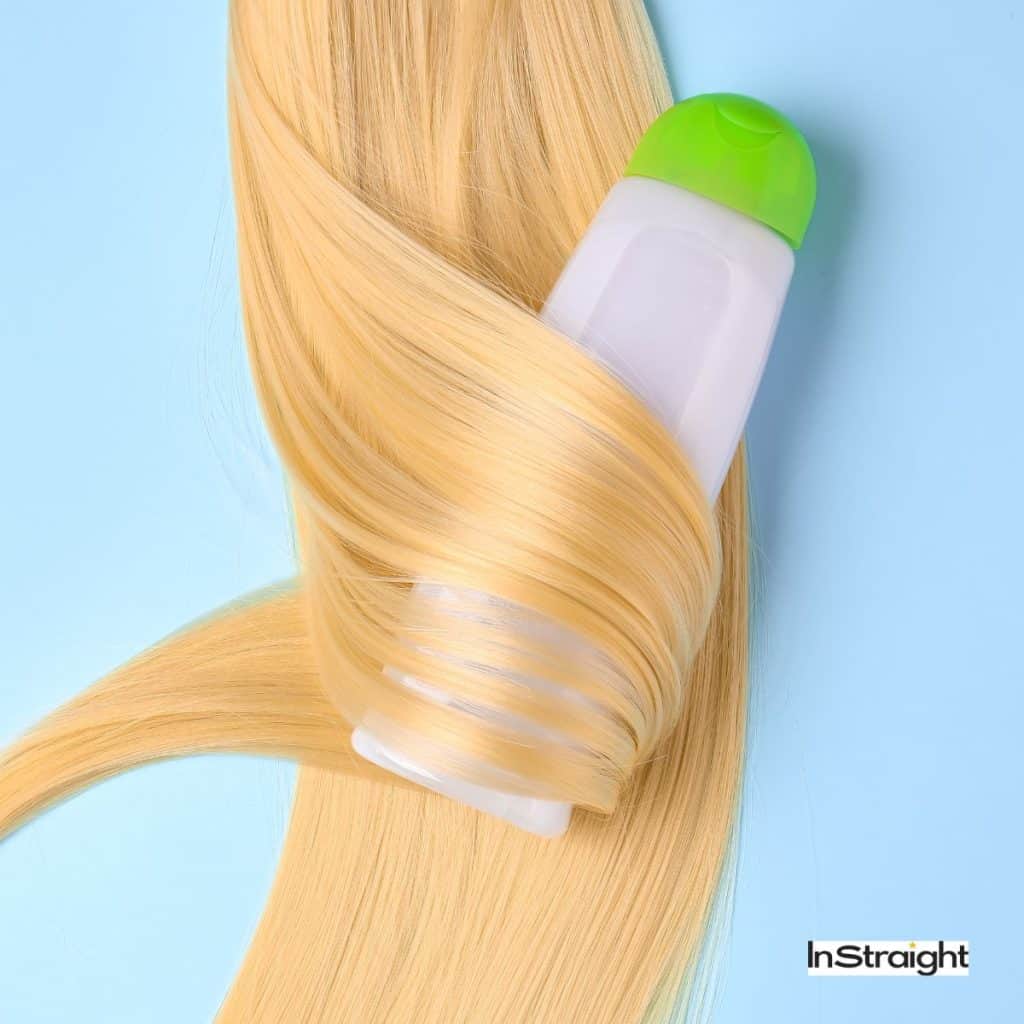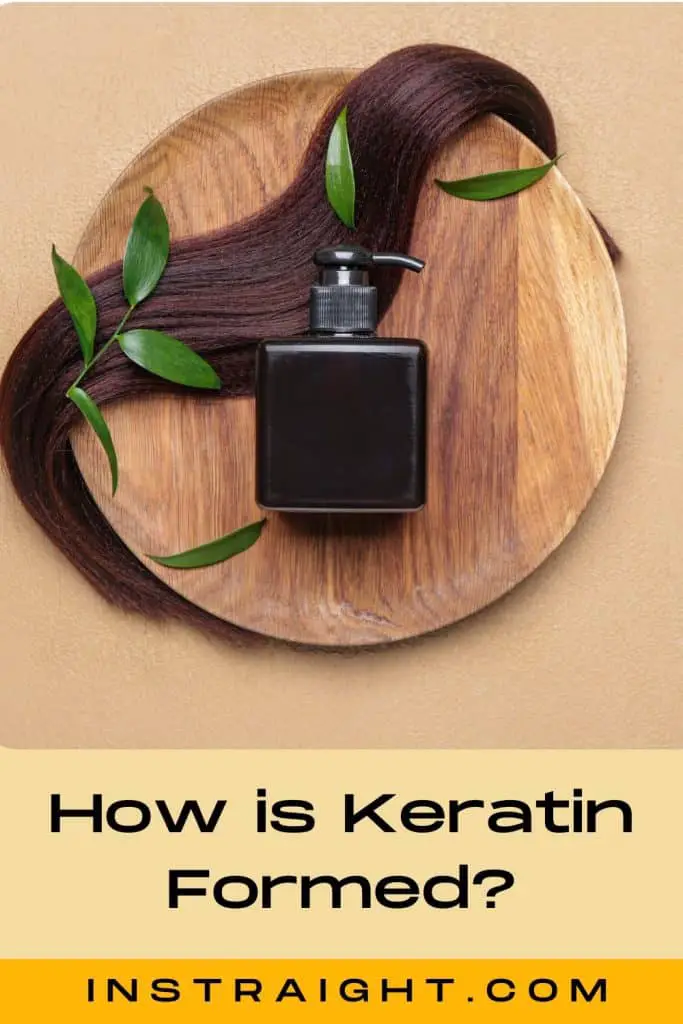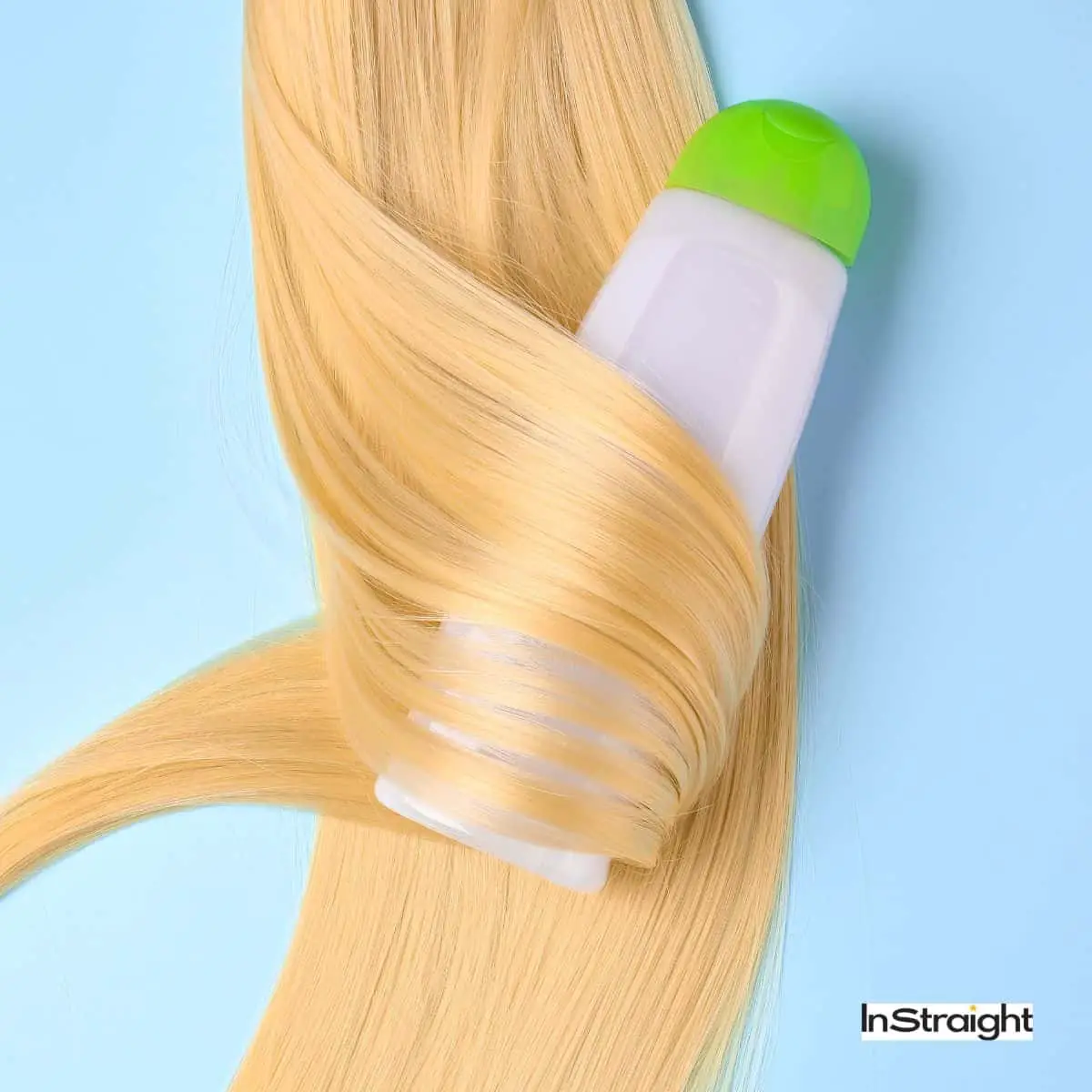If like me, you’re a fan of keratin treatments and you’ve been wondering why it does what it does, chances are you’re naturally curious about how it is made.
Keratin supplements comprise a blend of complex protein substances that serve to make your hair smoother, straighter, and healthier.
So, in this piece, I’ll be taking a look at the structure of keratin, its functions of keratin, its biomedical applications, and other intriguing questions you may have.
But first…
CHECK: What is the Best Keratin Hair Straightener?
How is Keratin Formed?
Keratin is an intermediate filament protein and, like every other protein, is formed by a combination of several amino acids. It essentially thrives on amino acid chains.
It is a structural protein found in virtually every epithelial tissue in the body, including skin, nails, and hair.

In the skin, hair, and nails, keratins can both be extracellular substances, intercellular substances, and intracellular substances, depending on the state tissue where they are found. As such, cell vitality is an essential component of keratin structure.
It differs from collagen, another structural protein, in that it does not feature in connective tissues.
Keratins help to protect the outer layer of the epithelial tissue because of their chemical properties and, in this case featuring extracellular substances. These chemical properties of keratin result from the combination of amino acids that make up keratin.
In keratin formation, the specific selection of these amino acids and their arrangement is made possible by the keratin gene expression. Keratin genes are the genes responsible for forming keratin, and they are usually expressed in keratin-producing cell types.
In the human skin, the epidermal cells are the cell types at the outer layer of the epithelium. They can be further modified to form hair and nails through keratinization processes.
This happens through continuous cell death experienced by epidermal cells as they continue to produce and store keratin.
Here is a detailed video on how keratin is made.
@piecesofpiawai Keratins are the building blocks of our hair known as proteins. Get to know more about them and how they work. #piecesofpiawai #keratins #keratinfacts #naturalhaircare #fyp #naturalhaircareproductsthatwork #haircareroutine #naturalhairremedies ♬ lofi and minimalist BGM(325514) – Kazuhi
The keratinized epidermal cells continue to harden as the level of keratin produced increases. This hardening is needed to impart the mechanical properties of keratin necessary for protecting the outer layer of the human skin.
However, to produce more keratin, you need to have the specific amino acids brought together to form the correct amino acid chain.
For the amino acids to be brought together, keratin genes must be activated so that keratin gene expression can occur.
Keratin gene expression only happens in specific cell types in epithelial tissue. These cells are referred to as keratinocytes (1).
Keratinocytes are epithelial cells in the epidermis (outer skin layer) and are responsible for the continuous production of keratin to maintain the skin and hair cycle.
The continuous keratin production is sustained by the need to constantly replace the cells at the outer layer of the human skin, hair shaft, and nail bed epidermis.
The dead cells are formed by keratinization (hard and soft keratinization), and the keratin forms the hair shaft in human hair and the cornified layer in the stratified epidermis.
As the outer layer of the human hair and skin wears off, epidermal stem cells, which are also epithelial cells, will differentiate between releasing newer cells. More keratin will have to be produced for keratinization. Keratin forms a core of the human hair cycle.
To understand more about the lifecycle of keratinocytes, you can watch this video:
Types of Keratins
There are two broad types of Keratins: Type 1 Keratin and Type 2 Keratin.
Classifying keratins can be slightly complicated. According to a research publication, “54 functional keratin genes exist” (2)!
I’m sure reading that got you slightly surprised. You won’t have to bother familiarizing yourself with all 54 different types as that information is only needed for biomedical and tissue engineering applications.
These 54 functional types of keratin have been categorized via a system that makes it easy to group them for identification and understanding of their roles.
Type 1 Keratins are also known as acidic keratins, while type 2 keratins are referred to as basic keratins.
Acidic keratins have a pI ranging between 4.5 and 6.0, making them relatively more acidic than type 2 keratins. On the other hand, basic keratins have a pI between 6.5 and 8.5.
Despite the pI difference between the two types of Keratins, their amino acid structure is very similar. This makes sense as any extreme differences in their amino acid structure become questionable.
Regardless of the type, keratin has an ultimate function resulting from its physicochemical properties, i.e., chemical and mechanical properties. That function can only be achieved if its unique chemical structure (amino acid chain sequence and arrangement) is sustained.
Any extreme deviation from this structure will cause the resulting protein to lose its original molecular structure.
28 of the 54 keratin types are categorized as type 1/acidic keratins, while the remaining 26 are classified as basic keratins.
Of the 28 acidic keratins, 11 are strictly found in the hair, while the rest can be found in other epithelial tissue. Six basic keratins are hair keratin, while the rest are found in other epithelial tissue.
Type 1 and 2 keratins can also be classified as soft keratin and hard keratins, depending on their location in the body (3).
The soft keratins are found in the human epidermis, hair shaft, the inner lining of the mouth, and the outer layer of other epithelial tissues.
Hard keratin is found in epidermal appendages such as nails and hairs, and in animals, you can have them in horns, feathers, claws, and hooves.
What is The Structure of Keratins?
Keratins are intermediate filaments composed of amino acids arranged to form a polymeric structure. Think of these natural polymers as amino acid chains with several repeating units.
Because of their existence as natural polymers, they can be said to have primary, secondary, tertiary, and quaternary structures. However, I’ll only talk about their primary and secondary structure in this article as there isn’t much information about their tertiary and quaternary structures.
Human keratin is insoluble because of its molecular structure, making it difficult to crystallize and analyze its polymeric structure. Remember, it’s not a synthetic polymer. Therefore, we can only work with what we can extract from biological tissues.
To understand its physical properties, let’s look at its primary and secondary structures in detail.
Primary structure of keratin
The primary structure of keratin refers to the linear sequence of the amino acids that make up the protein.
Just as in every protein, the amino acids must be arranged in a definite sequence to give them the proper structure. This amino acid chain is a vital substance of the structure.
The amino acids that comprise the keratin protein’s primary structure include alanine, leucine, arginine, cysteine, proline, glutamic acid, aspartic acid, and threonine. They contribute tangibly to giving the protein its physical properties.
Check out this video of the structure of keratin.
Secondary structure of keratin
The secondary structure of keratin is a little more complex than the linear sequence of amino acids.
The linear arrangement of amino acids forms a polypeptide chain. Each polypeptide chain is bent into helices and pleats.
Two polypeptide chain helices are twisted to form a left-handed coiled structure called a dimer. Two dimers will go on to form a protofilament by the creation of disulfide bonds.
The human keratin intermediate filament structure is the protein’s essential subunit, and it is produced through an aggregation of several protofilaments.
FAQs
Is Keratin soluble in water?
Keratin is not soluble in water. This factor makes it fit for protecting the skin and hair. However, flocculation can make it soluble in acid or alkali (4).
What is the difference between extenso and keratin?
Extenso is strictly a hair straightening treatment, while Keratin Treatments administers keratin supplements that help to nourish damaged hair, making them healthier, straighter, and shinier.
Conclusion
This was quite a cursory look into keratin’s chemical structure, and you might have probably learned some new scientific information.
Amidst many other things, I’m sure you now have a clear understanding of how keratin is made and what its structure is like. You probably now also understand why keratin treatments are essential in improving hair health.
So what do you do with this whole piece of information? You decide that!

Resources
- 1. Keratinocyte – an overview | ScienceDirect Topics. www.sciencedirect.com. https://www.sciencedirect.com/topics/agricultural-and-biological-sciences/keratinocyte
- 2. Moll R, Divo M, Langbein L. The human keratins: biology and pathology. Histochemistry and Cell Biology. 2008;129(6):705-733. doi:10.1007/s00418-008-0435-6
- 3. Type I Keratin – an overview | ScienceDirect Topics. www.sciencedirect.com. Accessed September 5, 2022. https://www.sciencedirect.com/topics/biochemistry-genetics-and-molecular-biology/type-i-keratin#:~:text=Type%20I%20(acidic)%20keratins%20are
- 4. Redirect Notice. www.google.com. Accessed September 5, 2022. https://www.google.com/url?sa=t&source=web&rct=j&url=https://www.sciencedirect.com/science/article/pii/S0021925818754367/pdf%3Fmd5%3D0719c7a7bf4c6b73dd93c3b792187336%26pid%3D1-s2.0-S0021925818754367-main.pdf&ved=2ahUKEwiHpLmF-dr5AhWUP-wKHb95CeoQFnoECAYQBQ&usg=AOvVaw2Z_lxyY-htCr6HcrZBId-f
- About the Author
- Latest Posts
I’m just a girl who likes to review everything. I have a sensitive and very dry skin type. Miss Nail Art 2014! Loves makeup & skincare. Read her Latest Articles
Find her on
YOUTUBE AND Instagram. Learn more about her HERE.

